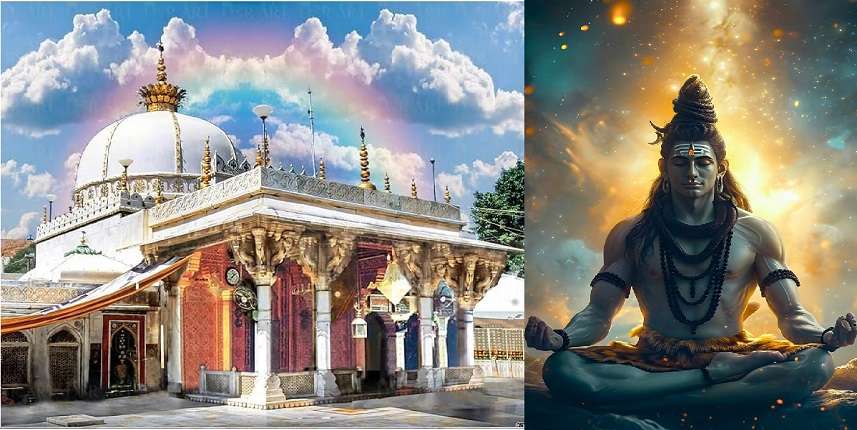Khwaja Moinuddin Chishti, located in Ajmer city of Rajasthan, is not only a dargah of India but is a major center of faith of Sufi saints and devotees in the whole world. Every year millions of Hindu and Muslim devotees come here to ask for vows. But for some time, a question has been gaining momentum in social media and special discussions- are there really the remains of the ancient Shiva temple below Ajmer Sharif Dargah? The more sensitive this question is, the more historical and culturally, it is also deepened.
https://www.youtube.com/watch?v=utkl7d7sgzg
Questions peeping through the window of history
The Dargah of Ajmer Sharif is the tomb of the 12th century famous Sufi saint Khwaja Moinuddin Chishti, known as Garib Nawaz. It is said that he came to India from Afghanistan and made Ajmer his work place. He spent his spiritual life here and finally died here in 1236. His followers built his dargah at this place, which has become a huge religious place today. But some people claim that there used to be an ancient Shiva temple in place of the dargah, which was later converted into the tomb of Sufi saint. This claim is not new, but this subject has been debated from time to time on various forums.
What do local and archaeological facts say?
So far any government documents, Archaeological Survey of India (ASI) or historical records have not clearly proved that Ajmer Sharif Dargah was built by breaking a Hindu temple. Comparison of the structure, architectural style and other historical sites of that period represents an Islamic architecture. The city of Ajmer is a historical city in itself, which was founded in the 7th century by King Ajaypal of the Chauhan dynasty. There are also Hindu religious places like Taragarh Fort, Brahma Temple and Pushkar Lake, which shows how diverse this region has been culturally.
Rumor or conspiracy?
It has become easier to spread rumors during the social media era. Recently some videos and posts went viral, claiming that the Shivling is hidden under the Ajmer Dargah. Such things can also cause communal tension to incite. Some Hindu organizations have also been raising the issue from time to time, while the Muslim community completely denies it. The administration and police department are always active to avoid disputes between the two sides.
Ajmer is an example of religious tolerance
Significantly, Ajmer Sharif Dargah is a place where both Hindu and Muslim devotees come in large numbers. Every year Urs fair is held here, in which people of every religion and class participate. Even many Bollywood celebs, leaders and foreign nationals come here to ask for their vows. In such a situation, dragging this place into a dispute can hurt religious unity and goodwill. For thousands of years, many religions and cultures in India have been forming a new identity together, which will not only be unfortunate to destroy, but also historically unfair.
Conclusion: The question is still open, but conscience needs
Till date no scientific or historical evidence has been found that proves that Ajmer Sharif Dargah was built by breaking the Shiva temple. Yes, it is possible that there may have been a Hindu religious place in that region in ancient times, because there are many places in India which have been part of various religious experiments over time. But until no concrete archaeological evidence is found, it will promote social stress to make such subjects a cause of rumor or religious dispute. It is important that we rise above their religious importance and see historical sites as a rich heritage of India.
